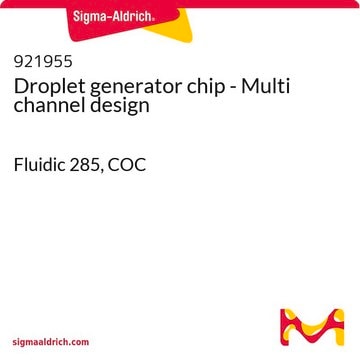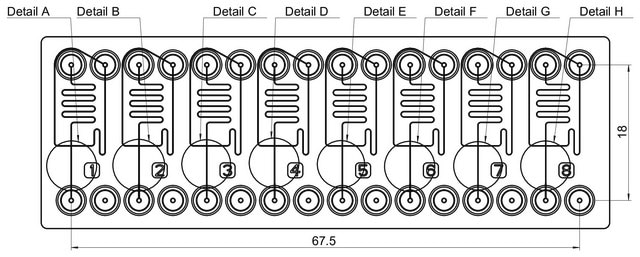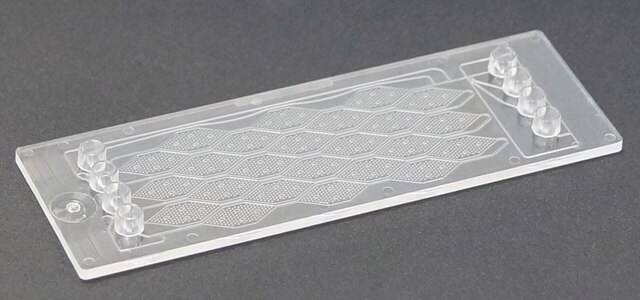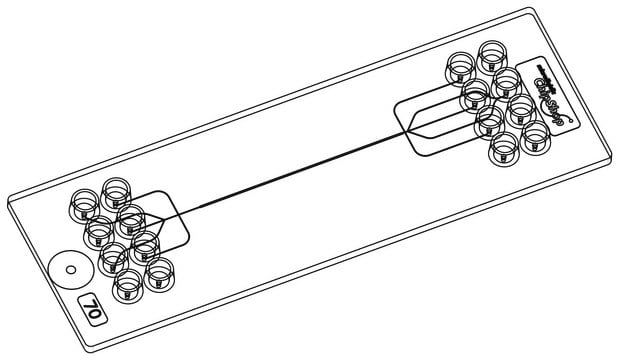921963
Droplet generator chip - Multi channel design
Fluidic 285, PC
Synonym(s):
Microfluidic chip
About This Item
Recommended Products
description
Microfludic chip x1
Looking for similar products? Visit Product Comparison Guide
Application
Droplet generator chip - Multi channel design, Fluidic 285, PC is made of PC (polycarbonate), and has various droplet generation units. The chip features five different droplet generation units with multiple channel designs and sizes, enabling a large set of experiments. Channels/ports not in use can easily be closed by means of Mini Luer plugs. With this multichannel design several design options to generate droplets with different volumes are implemented. Main channel as well as entrance channel vary in diameter enabling a large set of experiments. Fluidic 285 features Mini Luer interfaces.
Certificates of Analysis (COA)
Search for Certificates of Analysis (COA) by entering the products Lot/Batch Number. Lot and Batch Numbers can be found on a product’s label following the words ‘Lot’ or ‘Batch’.
Already Own This Product?
Find documentation for the products that you have recently purchased in the Document Library.
Articles
Microfluidic assembly improves polyamine nanoencapsulation of nucleic acids, overcoming challenges like polydispersity and poor reproducibility.
Microfluidic assembly improves polyamine nanoencapsulation of nucleic acids, overcoming challenges like polydispersity and poor reproducibility.
Microfluidic assembly improves polyamine nanoencapsulation of nucleic acids, overcoming challenges like polydispersity and poor reproducibility.
Microfluidic assembly improves polyamine nanoencapsulation of nucleic acids, overcoming challenges like polydispersity and poor reproducibility.
Our team of scientists has experience in all areas of research including Life Science, Material Science, Chemical Synthesis, Chromatography, Analytical and many others.
Contact Technical Service






